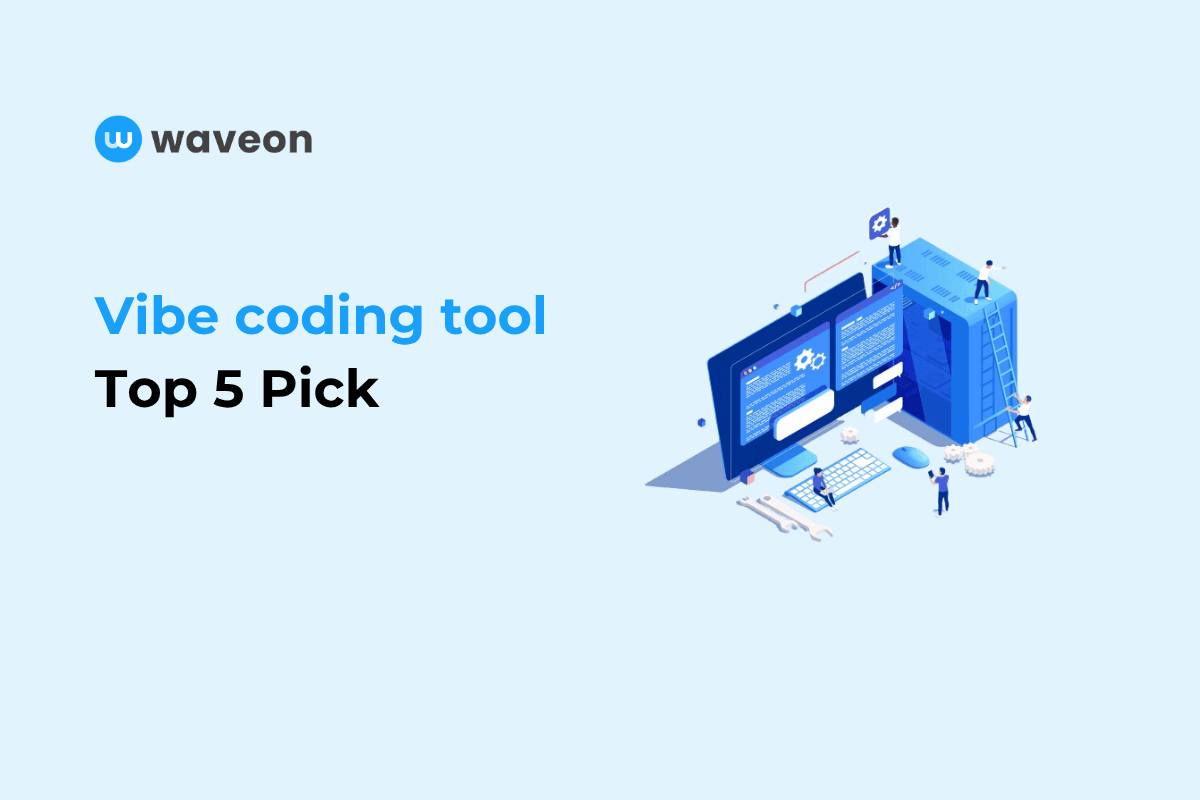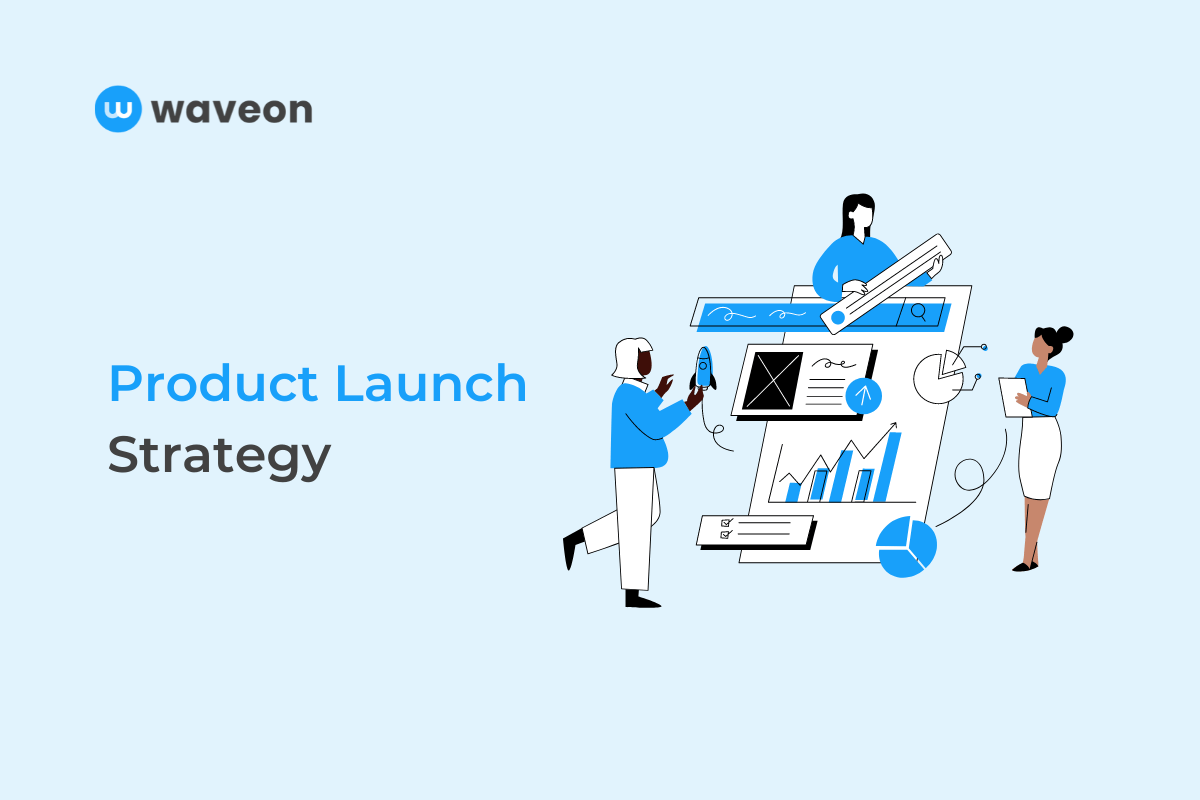Insight
6 Phases of an Effective Product Launch Strategy
Waveon Team
8/21/2023
0 min read
blogTocHead

Introduction
The success of a product launch is critical for businesses looking to make a significant impact in the market. It requires careful planning, strategic execution, and a deep understanding of the target audience. In this article, we will explore the strategies that can help businesses navigate the journey from ideation to a successful product launch.
1. Pre-Launch Phase
Laying the Foundation Before launching a product, it is essential to lay a strong foundation for success.
Market Research and Analysis: Thorough market research helps identify target audience segments, understand their needs, and analyze the competitive landscape. By gathering market insights, businesses can make informed decisions about their product and marketing strategies.
Developing a Compelling Value Proposition: A clear and compelling value proposition defines what sets a product apart from competitors. It should highlight the unique selling points, benefits, and value that the product brings to customers.
Building a Strong Brand Identity: Developing a strong brand identity involves creating a brand strategy, crafting a compelling brand story, and establishing brand guidelines. A cohesive and memorable brand identity builds trust and loyalty among customers.
2. Product Development Phase
Creating a Winning Product Effective product development strategies are crucial to delivering a product that meets customer expectations.
Setting Clear Goals and Objectives: Defining specific goals and objectives for the product launch helps provide a clear direction and focus for the development process. Measurable metrics enable businesses to track progress and evaluate success.
Agile Development Methodology: Adopting an agile development approach allows for iterative development, continuous feedback, and flexibility in adapting to evolving market needs. Regular testing and iteration help refine the product and ensure it aligns with customer expectations.
Collaborative Cross-Functional Teams: Cross-functional teams bring together diverse expertise and perspectives to drive effective product development. Collaboration and communication between team members are essential for efficient project management.
Prioritizing Minimum Viable Product (MVP) Features: Focusing on essential features for the initial launch helps get the product to market quickly and allows for user feedback and market validation. Incorporating customer insights and demands into feature development drives product improvements.
3. Marketing and Promotion
Generating Buzz and Excitement Effective marketing and promotion strategies are key to building anticipation and driving demand for the product.
Creating a Comprehensive Marketing Plan: Developing a well-rounded marketing plan involves identifying the target audience, selecting appropriate marketing channels, and allocating resources effectively. The plan should include digital marketing, traditional advertising, public relations, and other relevant tactics.
Content Marketing and Storytelling: Engaging and informative content, such as blog posts, videos, and social media updates, helps create awareness and build brand credibility. Storytelling techniques can be used to establish an emotional connection with the audience, making the product more relatable and memorable.
Leveraging Social Media and Influencers: Engaging with the target audience through social media platforms can generate buzz and create a community around the product. Collaborating with influencers or industry experts can amplify brand reach and credibility.
Customer Acquisition and Retention Strategies: Implementing targeted advertising campaigns, offering incentives, and providing exceptional customer service helps attract new customers and retain existing ones. Building loyalty programs and post-purchase support further enhances customer satisfaction and encourages repeat purchases.
4. Launch Execution
Bringing the Product to Market The execution phase involves careful planning and coordination to ensure a smooth product launch.
Setting a Launch Timeline and Milestones: Establishing a well-defined launch timeline with specific milestones helps keep the launch on track and ensures timely execution of tasks.
Conducting Beta Testing and Quality Assurance: Thorough testing, including beta testing with a select group of users, helps identify and rectify any product issues or usability challenges. Quality assurance processes should be in place to ensure a seamless user experience.
Training Internal Teams and Customer Support: Providing comprehensive training to internal teams, including sales and customer support, equips them with the necessary knowledge to effectively promote and support the product. This ensures consistent messaging and customer satisfaction.
Managing Supply Chain and Distribution Logistics: Ensuring a smooth supply chain and efficient distribution logistics is crucial for meeting customer demand and avoiding delays or stockouts. Effective coordination with suppliers and distributors is key.
5. Post-Launch Evaluation and Optimization:
Continuous Improvement Post-launch evaluation helps businesses gather feedback, analyze performance, and make necessary improvements.
Collecting and Analyzing Post-Launch Data: Collecting data on customer feedback, user engagement, sales, and market response provides valuable insights for future iterations and enhancements.
Monitoring Customer Feedback and Sentiment: Listening to customer feedback and monitoring sentiment helps identify areas for improvement, address customer concerns, and make adjustments to the product or marketing strategy.
Iterative Product Improvements and Updates: Using the insights gained, businesses can iteratively improve the product by addressing user needs and incorporating new features or enhancements. Regular updates keep the product relevant and competitive.
Measuring and Adjusting Marketing Strategies Based on Performance: Evaluating the effectiveness of marketing strategies allows businesses to optimize their marketing efforts. Data-driven decision-making helps identify which marketing channels and tactics are driving results and make necessary adjustments.
6. Key Challenges and Mitigation Strategies
While executing a product launch, businesses may encounter several challenges that can impact its success. Here are some key challenges and strategies to mitigate them:
Managing Stakeholder Expectations:
Stakeholders, including executives, investors, and team members, often have high expectations for a product launch. To manage these expectations effectively, it is crucial to maintain open and transparent communication throughout the process. Regular updates, setting realistic goals, and providing clear progress reports can help align stakeholders' expectations with the realities of the launch.
Addressing Unforeseen Technical Issues or Production Delays:
Technical issues or production delays can be disruptive to a product launch timeline. Mitigating these challenges requires proactive planning, close collaboration with development teams, and regular testing to identify and resolve issues early on. Having contingency plans in place and maintaining a flexible approach can help minimize the impact of unforeseen challenges.
Adapting to Market Dynamics and Competition:
The market landscape is dynamic, with changing customer preferences and evolving competition. To stay ahead, businesses should continuously monitor the market, track competitor activities, and be agile in adapting their product and marketing strategies. Regular market research and customer feedback analysis can provide insights for making necessary adjustments and maintaining a competitive edge.
Continuous Innovation and Staying Relevant:
Innovation is crucial to sustaining market success beyond the initial product launch. To stay relevant, businesses should foster a culture of continuous improvement and innovation. This involves encouraging feedback and ideas from customers and employees, actively seeking market trends, and investing in research and development. By constantly refining the product and introducing new features or enhancements, businesses can keep their offering fresh and meet evolving customer needs.
Conclusion
A successful product launch requires a well-executed strategy that encompasses the entire journey from idea to market success. By focusing on thorough market research, developing compelling value propositions, building strong brand identities, and implementing comprehensive marketing plans, businesses can generate excitement, build anticipation, and drive demand for their products.
Effective execution of the launch phase, coupled with post-launch evaluation and optimization, enables continuous improvement and ensures long-term success. By proactively addressing key challenges and staying agile in response to market dynamics, businesses can position themselves for a competitive advantage. With the right strategies in place, businesses can navigate the complex landscape of product launches and increase their chances of achieving market success.












